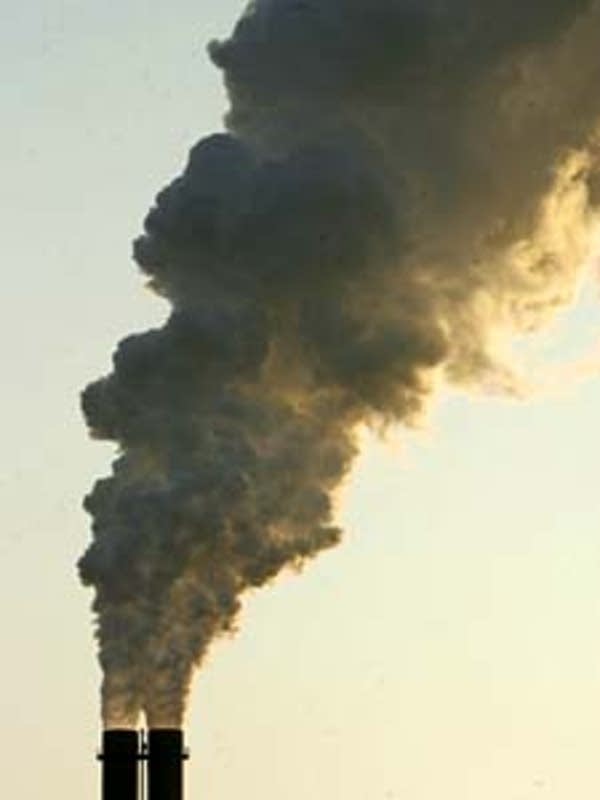Energy "roadmap" aims to cut CO2 emissions

The project was born out of a simple question about a greenhouse gas that gets much of the blame for global warming: "Is it possible to reduce CO2 emissions 80 percent below 1990 levels, without breaking the bank?"
Rolf Nordstrom is program director for the Great Plains Institute, the organization behind the plan. Three years ago the Minneapolis-based non-profit brought together a diverse list of government officials with representatives from energy, environmental, agricultural and tribal organizations.
The participants hale from Minnesota, Iowa, North and South Dakota, Wisconsin and Manitoba.
This region could, if it wanted to, reduce CO2 by as much as 80 percent below 1990 levels, and at a reasonably modest cost....
The group worked with the University of Minnesota to design a scientific model for projecting the costs and benefits of making energy changes in the region.
Create a More Connected Minnesota
MPR News is your trusted resource for the news you need. With your support, MPR News brings accessible, courageous journalism and authentic conversation to everyone - free of paywalls and barriers. Your gift makes a difference.
Nordstrom says the answer to the group's question was undeniable.
"The short answer is, yes, it is possible," Nordstrom says. "This region could, if it wanted to, reduce CO2 by as much as 80 percent below 1990 levels, and at a reasonably modest cost over a business-as-usual case, but really only if we begin now."
The group produced a seven-step roadmap. The first step is to use energy more efficiently.
Gary Connett, head of environmental programs for Great River Energy, the state's second largest wholesale electricity supplier, says simple steps would save significant amounts of both energy and money.
He says simply replacing old appliances with energy-efficient models and incandescent bulbs with compact fluorescent lights would save a lot of juice.
"Each one of those lamps will save over 50 kilowatt-hours a year. For Great River Energy, that's 125 million kilowatt-hours that those bulbs will save in a year," Connett says. "That's enough to provide electricity to 10,000 new homes for a year."
The roadmap sees energy efficiency as a way to reduce carbon emissions in the short term while continuing to make progress toward long-term goals.
One of those long-term goals is generating more energy from renewable sources like wind, hydropower and biofuels.
Xcel Energy spokesman Brian Zelenak says that strategy is a pragmatic one, especially with oil prices constantly fluctuating.
"From a utility perspective, you never want all your eggs in one basket and to have a diverse portfolio of resources is always encouraged. So whether it's coal, nuclear, wind, biomass, hydro, you're always looking at new, innovative technologies," he says.
In addition to developing clean energy sources, the roadmap calls for using methods to trap the carbon dioxide released by burning coal.
But Cesia Kearns with the Minnesota North Star Chapter of the Sierra Club says that's where the plan falls short. It relies on continued use of coal.
"We need to move away from using coal as a power source in general," says Kearns. There are hazardous substances that come from the waste of coal after it's burned, so even if you can reduce some of the pollutants coming from coal emissions, it is a dirty fuel."
Kearns says even improving existing technologies for the capture and storage of CO2 still don't make coal safe enough.
But Rolf Nordstrom from the Great Plains Institute says the group focused on using existing technologies in order to make the roadmap realistic.
He says the enthusiasm for reducing emissions and using cleaner energy in the Upper Midwest is a sign of a national trend, as states enact their own environmental initiatives ahead of the federal government. He says more and more states are starting to see opportunities for fighting global warming.
"Individual states and whole regions are deciding that they really need to take their energy futures into their own hands," Nordstrom says.
The Minnesota Legislature recently passed a series of landmark environmental bills aimed at increasing energy efficiency and clean energy sources. One measure set a renewable energy standard requiring utilities to get at least 25 percent of their energy from renewable sources by 2025. Another requires utility companies to reduce consumption by 1.5 percent per year.
Although some key players in the legislation were involved in developing the roadmap, participants in the project say the two efforts were completely separate.
